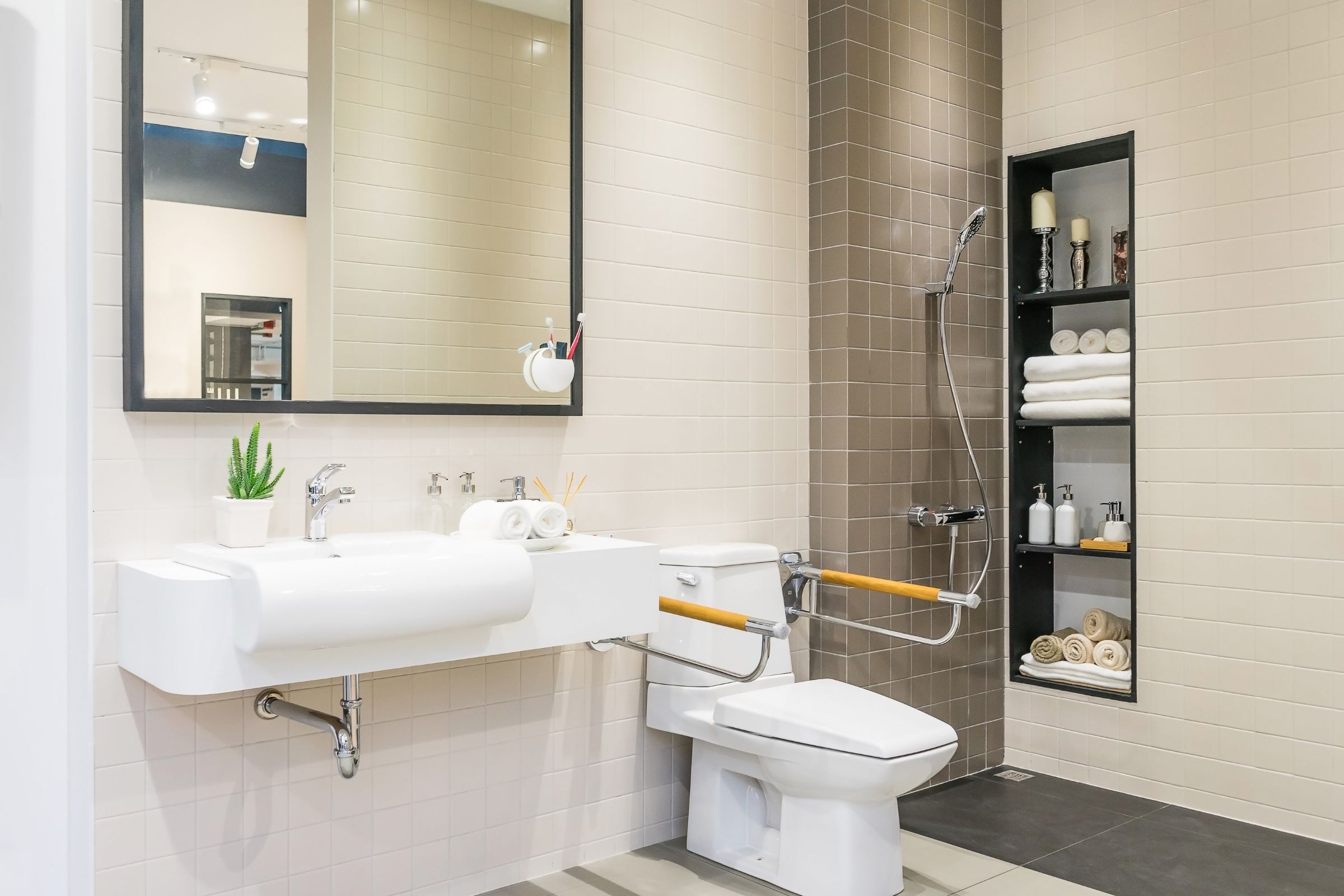A regular bath or shower is one of those little things that helps people feel human. However, once you have mobility challenges, getting regular baths and showers can be difficult. If you do not have safe, accessible showers or baths, you may be reduced to sponge baths and weekly hair washing. It can leave people feeling despondent. Fortunately, there are several accessible bathing solutions that can transform your bathroom into an accessible washroom, whatever your mobility challenges may be.
Key Take-Aways For Accessible Bathing:
- The scope of accessible bathing and the impact of minor adjustments.
- Pros and cons of Walk-In Tubs versus Barrier-Free Showers.
- Making informed choices through expert advice and insurance insights.
Accessible Bathing
Anything that makes showering or bathing more effortless for people with mobility challenges is considered Accessible Bathing. You can modify your existing bath or shower with bath tape rails, use shower chairs, and install removable shower heads. Those modifications may be enough, especially if a mobility challenge is short-term. However, for long-term mobility changes or to deal with age-related mobility issues, you may consider one of two long-term solutions: Walk-In Tubs and Barrier-Free Showers.
Walk-In Tubs
Walk-in tubs may be the gold standard in accessible bathing. They are easy to enter, eliminating the risks of stepping into or out of a shower. In addition, because they have seat-level seating, they do not require people to lower themselves to sit or force them to raise themselves. Even better, walk-in tubs are luxurious. They have water massage, spa baths, and whirlpools, which can offer therapeutic benefits.
Although they are called walk-in tubs, it is crucial to remember that they still have a threshold. They have a small lip on the bottom. That can make them a poor choice for people in wheelchairs or with other severe mobility issues.
Barrier Free Showers
If you are in a wheelchair, a barrier-free shower may be a great choice. These showers have no threshold, meaning someone can move into them in a wheelchair or walker. You can also transfer from a wheelchair to a shower chair quickly. These showers eliminate the riskiest part of the bath transfer process because they do not require people to step up but keep them on a level surface.
Contact Mobility123 Today
Want to find out more information about accessible bathing options? Contact Us. We can assess your situation and explain the options that will work best for you.
F.A.Q. | Accessible Bathing Solutions
What is accessible bathing?
Accessible bathing refers to any modifications or installations in your bathroom designed to make the bathing process easier and safer for individuals with mobility issues. This can range from simple changes like adding grab bars to more advanced solutions like walk-in tubs and barrier-free showers.
Are walk-in tubs suitable for wheelchair users?
Generally, walk-in tubs are not the best option for wheelchair users because they usually come with a small threshold that might be difficult to navigate. Barrier-free showers are a more suitable alternative in such cases.
Can I retrofit my existing shower to make it accessible?
Yes, there are many ways to retrofit an existing shower for accessibility. You can install grab bars, non-slip flooring, and adjustable shower heads as quick and less expensive methods. However, for long-term solutions, consider installing a barrier-free shower.
Do accessible bathing solutions come in different styles and finishes?
Absolutely! Accessible bathing solutions are available in a variety of styles, colors, and finishes to match your existing bathroom decor.
Are Walk-In Tubs or barrier-free showers covered by insurance or Medicare?
Coverage varies by policy, but typically, these installations are considered “home modifications” and are not covered by Medicare. Some private insurance companies may offer partial coverage. It’s essential to check your policy and consult with your insurance provider.
How long does it take to install a Walk-In Tub or barrier-free shower?
Installation times can vary depending on the complexity of the job and the condition of your existing bathroom. Generally, a professional installation can take anywhere from one to three days.
Do I need a professional to install these bathing solutions?
While some minor modifications like adding grab bars can be DIY projects, it’s strongly recommended to have a professional install more complex solutions like walk-in tubs or barrier-free showers to ensure they meet safety standards.
Can a barrier-free shower also include luxury features like spa jets?
Yes, many barrier-free showers come with optional luxury features, including spa jets and multiple shower head configurations.
How do I maintain my Walk-In Tub or Barrier-Free shower?
Maintenance is generally straightforward. Regular cleaning with non-abrasive cleaners will keep your installations in good shape. Some models may have filters or jets that require occasional maintenance, so refer to your product’s user manual for specific instructions.
How can I get an estimate for my accessible bathing project?
Contact us at Mobility123 for a comprehensive assessment and estimate tailored to your specific needs and bathroom layout. Our team of experts will guide you through the options best suited to your situation.


